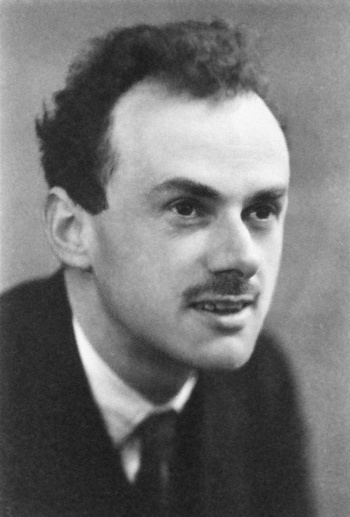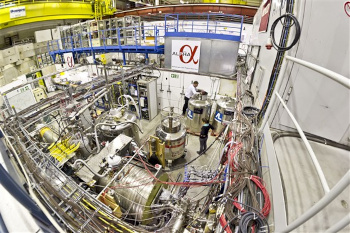Antimatter Gravitation
November 13, 2023
I learned a lot of useful
home maintenance techniques while
working with my
father for a few
summers during
high school. My father was a
carpenter-
contractor who built custom
houses from the ground up. This included
laying cast iron sewer lines at the lowest level, to application of
roof shingles at the highest level. This was also my first experience with a
shoddy Chinese product, a
keg of improperly
heat treated 16d nails that were more likely to
bend, than drive true, when
hammered. This was in the early
1960s; now, sixty years later, shoddy
merchandise is still a problem.
Every
dollar spent on
materials was a dollar out of my father's
pocket, and the reason for the
purchase of these nails was their low
cost, the same reason for purchases of many
online items today. However, as they say, "
you get what you pay for." My father was also critical of his
son's using too many nails to affix such things as
floor underlayment. His frequent
rant was, "Where is it going to
fall -
Up?" I was reminded of this by the results of a recent
experiment at
CERN, the
ALPHA-g experiment, that finally proves that
antimatter behaves
gravitationally like ordinary
matter and does not
fall up.[1-2]
The
existence of antimatter was
theorized by
Paul Dirac (1902-1984) in the
eponymous Dirac equation of 1928. The
theory was
verified by the discovery of the
positron, the antimatter version of the
electron, by
Carl Anderson (1905-1991) in 1932. Aside from their complementary
elementary charge, matter and antimatter appear to have identical
physical properties, as
experiments have confirmed to high
precision. This makes all the more
mysterious the fact that anti-matter is nearly absent from our
universe, where just ordinary matter remains. The gravitation experiment is the latest in a long line of experiments to determine the cause.

Paul Dirac (1902-1984).
Dirac's physics contemporaries, including Einstein, noted his unusual personality. Dirac was taciturn and dreaded any small talk and socialization. While at Cambridge, his colleagues defined a unit they called a dirac, which was one word per hour.
Such traits likely derived from an unhappy childhood centered around his strict and authoritarian father, a French teacher, who required his children to speak to him only in French, so they would learn the language. Dirac was silent most of the time because of his limited knowledge of French.
Interestingly, Dirac's undergraduate degree was in electrical engineering, in which he excelled; but, employment was scarce at the time of his graduation. Because of this, he continued his education, eventually getting a PhD at Cambridge in 1926 by writing a dissertation on quantum mechanics, the first such dissertation to be submitted anywhere.
In notable agreement to the 1960 magazine article, "The Unreasonable Effectiveness of Mathematics in the Natural Sciences" by his brother-in-law, Eugene Wigner (1902-1995), Dirac wrote the following in a May, 1963, article, "Why is nature constructed [mathematically]? One can only answer that our present knowledge seems to show that nature is so constructed. We simply have to accept it. One could perhaps describe the situation by saying that God is a mathematician of a very high order, and He used very advanced mathematics in constructing the universe."[3]
(A 1933 Nobel Foundation photograph, via Wikimedia Commons))
A CERN experiment
concurrent with ALPHA-g, the
AEgIS experiment, plans to measure the gravitation of antimatter by examining the behavior of an
antihydrogen beam. An antihydrogen
atom is the antimatter
complement of
hydrogen in which the electron is replaced by a positron, and the
proton is replaced by an
antiproton. Extreme
precision in AEgIS is obtained through the use of
interferometry.[4] The cold antihydrogen atoms travel at a
speed of a few hundred
meters per second.[4] A
Moiré deflectometer is used to measure the vertical
displacement arising from gravity, since the
deflection over a
meter's travel is just a few
micrometers.[4]
The AEgIS experiment is
conceptually simple, but production and handling of the antimatter is critical to its success, and the success of ALPHA-g. One problem is that antimatter combines with normal matter to produce
photons in a
mutual annihilation, a process that's an important
energy source in the
Star Trek fictional universe. The complete annihilation of matter and antimatter by
mass-energy equivalence is considerably greater than the mere
fusion of
hydrogen into
helium, as happens in our
Sun. In that case, just 0.71% of the original
rest mass is converted.
An important part of any antimatter experiment is the creation of a sufficient quantity of antihydrogen that's stable for an extended period. CERN
scientists were able to capture 309 antihydrogen atoms for up to 1,000
seconds in June, 2012.[5] Importantly, these atoms were contained long enough for many of them to reach their
ground state, a necessary condition for an accurate measurement.
Trapping and accumulation of antihydrogen atoms are now routine, and up to several thousand atoms have been simultaneously stored for the ALPHA-g experiment.[1]
Since gravity is such a weak
force, it's usually masked by stronger
electromagnetic forces. The
repulsive electric force between two
electrons is nearly 10
43 times stronger than their gravitational attraction. Antihydrogen atoms are
neutral, so
electrostatic forces are not an issue, but gravity-level forces are equivalent to a
magnetic field of the order 10
-6 gauss.
Earth's magnetic field varies with location, but it's of the order of 0.5 gauss. The ALPHA-g experiment was designed to overcome this source of
error by containing the atoms in a
magnetic trap called a
Penning trap.

The ALPHA-g experiment at CERN.
The ALPHA Collaboration consists of scientists from twenty-six institutions.[1,6]
(CERN photograph. Click for larger image.)
The antiprotons for the ALPHA-g experiment were produced by
particle collisions in CERN's
accelerators, and they were slowed through
deceleration in a ring.[2] The antiprotons and positrons were then mixed to form atoms of antihydrogen that are contained in a vertically oriented antihydrogen trap.[2] In the experiment,
trap doors at the top and bottom were opened to detect the up/down motion of the atoms in Earth's gravitational field.[1] There is some
thermal motion; so, the gravity is inferred from the difference in the numbers moving upwards and downwards.[1] While it's been determined that antimatter falls down, and not up, there's the further question of whether the
falling rate is the same as for matter.[2]
References:
- E. K. Anderson, W. Bertsche, N. M. Bhatt, G. Bonomi, A. Capra, I. Carli, C. L. Cesar, M. Charlton, A. Christensen, R. Collister, A. Cridland Mathad, D. Duque Quiceno, S. Eriksson, A. Evans, N. Evetts, S. Fabbri, J. Fajans, A. Ferwerda, T. Friesen, M. C. Fujiwara, D. R. Gill, L. M. Golino, M. B. Gomes Gonçalves, P. Grandemange, P. Granum, J. S. Hangst, M. E. Hayden, D. Hodgkinson, E. D. Hunter, C. A. Isaac, A. J. U. Jimenez, M. A. Johnson, J. M. Jones, S. A. Jones, S. Jonsell, A. Khramov, N. Madsen, L. Martin, N. Massacret, D. Maxwell, J. T. K. McKenna, S. Menary, T. Momose, M. Mostamand, P. S. Mullan, J. Nauta, K. Olchanski, A. N. Oliveira, J. Peszka, A. Powell, C. Ø. Rasmussen, F. Robicheaux, R. L. Sacramento, M. Sameed, E. Sarid, J. Schoonwater, D. M. Silveira, J. Singh, G. Smith, C. So, S. Stracka, G. Stutter, T. D. Tharp, K. A. Thompson, R. I. Thompson, E. Thorpe-Woods, C. Torkzaban, M. Urioni, P. Woosaree, and J. S. Wurtele, "Observation of the effect of gravity on the motion of antimatter," Nature, vol. 621, no. 7980 (September 28, 2023), pp. 716-722, https://doi.org/10.1038/s41586-023-06527-1. This is an open access article with a PDF file available at the same URL.
- Pallab Ghosh, "Scientists get closer to solving mystery of antimatter, BBC News, September 27, 2023.
- Paul Dirac, "The Evolution of the Physicist's Picture of Nature," Scientific American, May, 1963 (Republished, June 25, 2010).
- G. Testera, A.S. Belov, G. Bonomi, I. Boscolo, N. Brambilla, R. S. Brusa, V.M. Byakov, L. Cabaret, C. Canali, C. Carraro, F. Castelli, S. Cialdi, M. de Combarieu, D. Comparat, G. Consolati, N. Djourelov, M. Doser, G. Drobychev, A. Dupasquier, D. Fabris, R. Ferragut, G. Ferrari, A. Fischer, A. Fontana, P. Forget, L. Formaro, M. Lunardon, A. Gervasini, M.G. Giammarchi, S.N. Gninenko, G. Gribakin, R. Heyne, S.D. Hogan, A. Kellerbauer, D. Krasnicky, V. Lagomarsino, G. Manuzio, S. Mariazzi, V.A. Matveev, F. Merkt, S. Moretto, C. Morhard, G. Nebbia, P. Nedelec, M.K. Oberthaler, P. Pari, V. Petracek, M. Prevedelli, I. Y. Al-Qaradawi, F. Quasso, O. Rohne, S. Pesente, A. Rotondi, S. Stapnes, D. Sillou, S.V. Stepanov, H. H. Stroke, G. Tino, A. Vairo, G. Viesti, H. Walters, U. Warring, S. Zavatarelli, et al., "Formation Of A Cold Antihydrogen Beam in AEGIS For Gravity Measurements," arXiv, May 30, 2008.
- The ALPHA Collaboration, "Confinement of antihydrogen for 1,000 seconds," Nature Physics, vol. 7, no. 7 (June 5, 2011), pp. 558-564.
- ALPHA Collaboration Website at CERN.
Linked Keywords: Home; maintenance; technology; technique; wage labor; work; father; summer; high school; carpentry; carpenter; general contractor; house; plumbing; laying; cast iron; sanitary sewer; sewer line; roof shingle; shoddy; China; Chinese; product (business); keg<; heat treating; heat treated; penny (unit); 16d; nail (fastener); bend; hammer; hammered; 1960s; merchandise; United States dollar; consumption (economics); spend; material; pocket; purchase; cost; Internet; online; common law of business balance; you get what you pay for; son; floor; underlayment; diatribe; rant; free fall; position (geometry); up; experiment; CERN; ALPHA-g experiment; antimatter; gravitation; gravitationally; matter; existence; theoretical physics; theorized; Paul Dirac (1902-1984); eponym; eponymous; Dirac equation; scientific theory; verify; positron; electron; Carl Anderson (1905-1991); elementary charge; physical properties; precision; mystery; mysterious; universe; physics; Albert Einstein; personality; taciturn; fear; dread; small talk; socialization; University of Cambridge; colleague; unit of measurement; word; hour; trait; happiness; unhappy; childhood; discipline; strict; authoritarian; father; French language; teacher; child; children; speech; speak; language; silence; silent; knowledge; undergraduate degree; electrical engineering; employment; graduation; education; Doctor of Philosophy; PhD; thesis; dissertation; quantum mechanics; magazine article; The Unreasonable Effectiveness of Mathematics in the Natural Sciences; sibling-in-law; brother-in-law; Eugene Wigner (1902-1995); nature; mathematics; mathematically; God; mathematician; Wikimedia Commons; concurrent; AEgIS experiment; antihydrogen; atom; complement; hydrogen; proton; antiproton; interferometry; speed; meters per second; Moiré deflectometer; displacement (vector); deflection (physics); micrometer; concept; conceptually; photon; mutual annihilation; energy; Star Trek; fictional universe; mass-energy equivalence; nuclear fusion; helium; Sun; rest mass; scientist; second; ground state; magnetic trap (atoms); trapping; fundamental interaction; force; Lorentz force; electromagnetic force; Coulomb's law; repulsive electric force; electric charge; neutral; electrostatic; Earth's magnetic field; gauss (unit); magnetic field; error; magnetic trap (atoms); Penning trap; ALPHA Collaboration; research institute; photograph; collider; particle collision; particle accelerator; acceleration; deceleration; thermal motion; gravitational acceleration; falling rate.